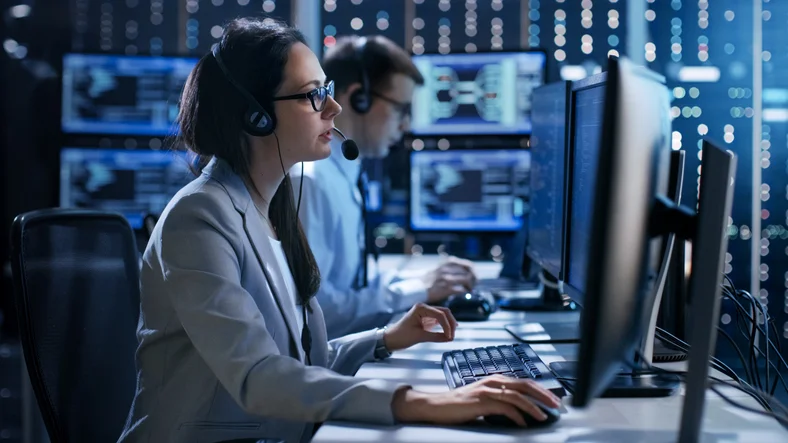Navigating the World of Corporate Security: Key Insights and Finest Practices
From Cybersecurity to Physical Steps: Strengthening Company Safety in an Altering World
In today's swiftly advancing electronic landscape, the significance of corporate safety can not be overstated. As cyber risks end up being progressively innovative and prevalent, organizations have to exceed standard cybersecurity measures to protect their operations and properties - corporate security. This is where the combination of physical protection measures ends up being essential. By integrating the toughness of both cybersecurity and physical security, companies can create a comprehensive protection strategy that addresses the diverse variety of hazards they deal with. In this discussion, we will certainly discover the changing danger landscape, the requirement to incorporate cybersecurity and physical protection, the execution of multi-factor authentication steps, the value of employee understanding and training, and the adaptation of safety steps for remote labor forces. By taking a look at these key areas, we will acquire important understandings right into exactly how companies can strengthen their business safety and security in an ever-changing world.
Understanding the Changing Danger Landscape
The advancing nature of the modern-day world requires a thorough understanding of the transforming danger landscape for effective business safety. It is vital for organizations to stay educated and adapt their security gauges to attend to these evolving risks.
One key aspect of comprehending the changing risk landscape is acknowledging the different kinds of dangers that organizations face. In addition, physical dangers such as theft, criminal damage, and corporate espionage stay widespread issues for organizations.
Monitoring and evaluating the threat landscape is vital in order to determine possible dangers and vulnerabilities. This involves remaining upgraded on the most recent cybersecurity trends, examining hazard knowledge records, and conducting normal threat evaluations. By comprehending the transforming danger landscape, organizations can proactively carry out appropriate safety steps to mitigate dangers and shield their assets, reputation, and stakeholders.
Integrating Cybersecurity and Physical Safety
Incorporating cybersecurity and physical safety and security is critical for thorough company defense in today's digital and interconnected landscape. As companies increasingly count on innovation and interconnected systems, the boundaries in between physical and cyber risks are ending up being obscured. To effectively protect against these dangers, an alternative strategy that integrates both cybersecurity and physical protection actions is necessary.
Cybersecurity concentrates on securing electronic possessions, such as networks, systems, and data, from unapproved accessibility, interruption, and burglary. Physical safety and security, on the various other hand, includes procedures to secure physical properties, individuals, and facilities from threats and susceptabilities. By incorporating these two domain names, companies can attend to susceptabilities and hazards from both physical and electronic angles, consequently boosting their total security position.
The integration of these two techniques enables a more detailed understanding of safety dangers and makes it possible for a unified reaction to events. As an example, physical access controls can be enhanced by incorporating them with cybersecurity protocols, such as two-factor verification or biometric recognition. Cybersecurity procedures can be matched by physical safety steps, such as surveillance cameras, alarm systems, and safe gain access to factors.

Carrying Out Multi-Factor Verification Steps
As organizations significantly focus on extensive safety procedures, one effective method is the execution of multi-factor authentication procedures. Multi-factor verification (MFA) is a safety approach that needs users to offer several kinds of recognition to access a system or application. This approach adds an additional layer of defense by incorporating something the user recognizes, such as a password, with something they have, like a safety or a finger print token.
By carrying out MFA, companies can considerably improve their protection stance - corporate security. Traditional password-based authentication has its limitations, as passwords can be easily jeopardized or failed to remember. MFA alleviates these dangers by adding an extra authentication aspect, making it a lot more tough for unapproved people to get to delicate info
There are numerous sorts of multi-factor verification approaches readily available, including biometric authentication, SMS-based confirmation codes, and equipment symbols. Organizations need to assess their specific needs and pick the most suitable MFA remedy for their requirements.
However, the execution of MFA should be meticulously prepared and performed. It is important to strike an equilibrium between safety and security and usability to stop individual stress and resistance. Organizations needs to additionally take into consideration potential compatibility his comment is here concerns and provide ample training and assistance to make certain a smooth shift.
Enhancing Worker Awareness and Training
To strengthen business safety, companies need to focus on enhancing staff member understanding and training. In today's rapidly evolving danger landscape, staff members play a crucial function in safeguarding a company's sensitive info and assets. However, several safety and security violations happen due to human mistake or lack of understanding. As a result, organizations need to invest in thorough training programs to educate their staff members about possible risks and the very best practices for minimizing them.
Effective employee understanding and training programs must cover a vast array of subjects, consisting of data security, phishing attacks, social engineering, password hygiene, and physical protection procedures. These programs need to be tailored to the specific needs and responsibilities of different employee roles within the organization. Regular training sessions, simulations, and workshops can assist workers establish the essential abilities and expertise to respond and determine to safety threats successfully.
Moreover, companies must motivate a culture of security recognition and offer recurring updates and tips to keep staff important site members notified about the most recent hazards and mitigation techniques. This can be done via inner interaction channels, such as newsletters, intranet sites, and e-mail projects. By promoting a security-conscious workforce, organizations can considerably decrease the possibility of safety and security occurrences and secure their valuable possessions from unapproved access or concession.

Adapting Protection Measures for Remote Workforce
Adapting business protection actions to accommodate a remote workforce is vital in making certain the protection of sensitive details and assets (corporate security). With the increasing fad of remote work, organizations have to execute suitable safety actions to mitigate the threats related to this brand-new means of functioning
One crucial aspect of adapting security measures for remote job is developing safe and secure interaction networks. Encrypted messaging systems and online exclusive networks (VPNs) can aid protect sensitive details and prevent unauthorized gain access to. Additionally, organizations must enforce using solid passwords and multi-factor verification to enhance the safety of remote gain access to.
Another crucial factor to consider is the execution of protected remote gain access to remedies. This involves providing employees with safe accessibility to company sources and data with online desktop computer framework (VDI), remote desktop computer protocols (RDP), or cloud-based remedies. These modern technologies ensure that sensitive information continues to be secured while making it possible for workers to websites perform their duties successfully.

Last but not least, comprehensive safety recognition training is important for remote workers. Educating sessions need to cover best practices for securely accessing and dealing with delicate details, identifying and reporting phishing attempts, and preserving the general cybersecurity hygiene.
Final Thought
Finally, as the threat landscape continues to develop, it is critical for organizations to enhance their security measures both in the cyber and physical domains. Incorporating cybersecurity and physical security, carrying out multi-factor verification actions, and enhancing worker understanding and training are crucial steps in the direction of attaining robust corporate security. In addition, adapting protection actions to accommodate remote workforces is essential in today's altering world. By executing these procedures, companies can minimize dangers and safeguard their valuable properties from potential hazards.
In this conversation, we will check out the changing danger landscape, the need to incorporate cybersecurity and physical safety and security, the execution of multi-factor authentication procedures, the significance of staff member awareness and training, and the adjustment of security procedures for remote labor forces. Cybersecurity steps can be enhanced by physical safety and security actions, such as surveillance cams, alarms, and protected accessibility points.
As organizations significantly prioritize extensive protection measures, one reliable method is the execution of multi-factor authentication actions.In final thought, as the threat landscape proceeds to develop, it is critical for companies to enhance their security gauges both in the cyber and physical domain names. Incorporating cybersecurity and physical safety and security, applying multi-factor verification measures, and improving worker awareness and training are vital actions towards achieving robust company safety and security.